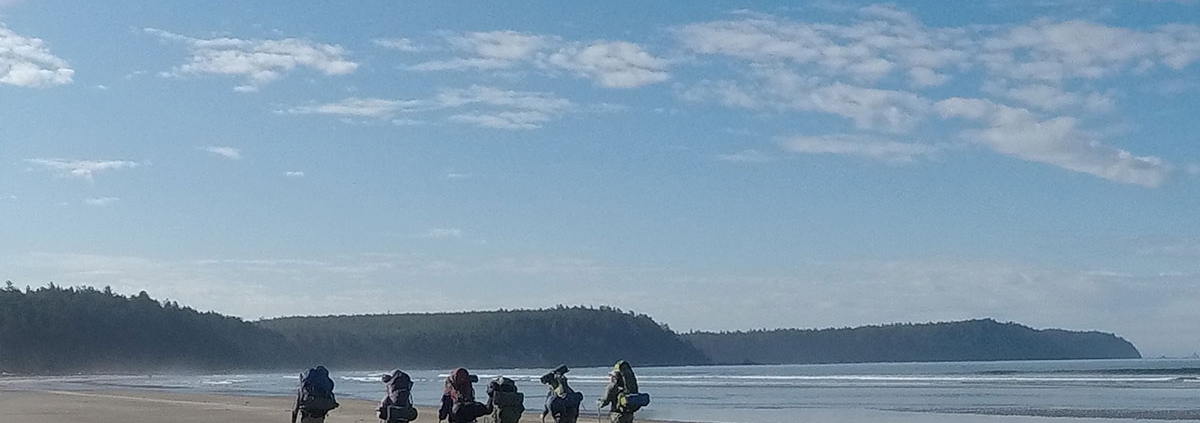Honoring Native American Heritage Month
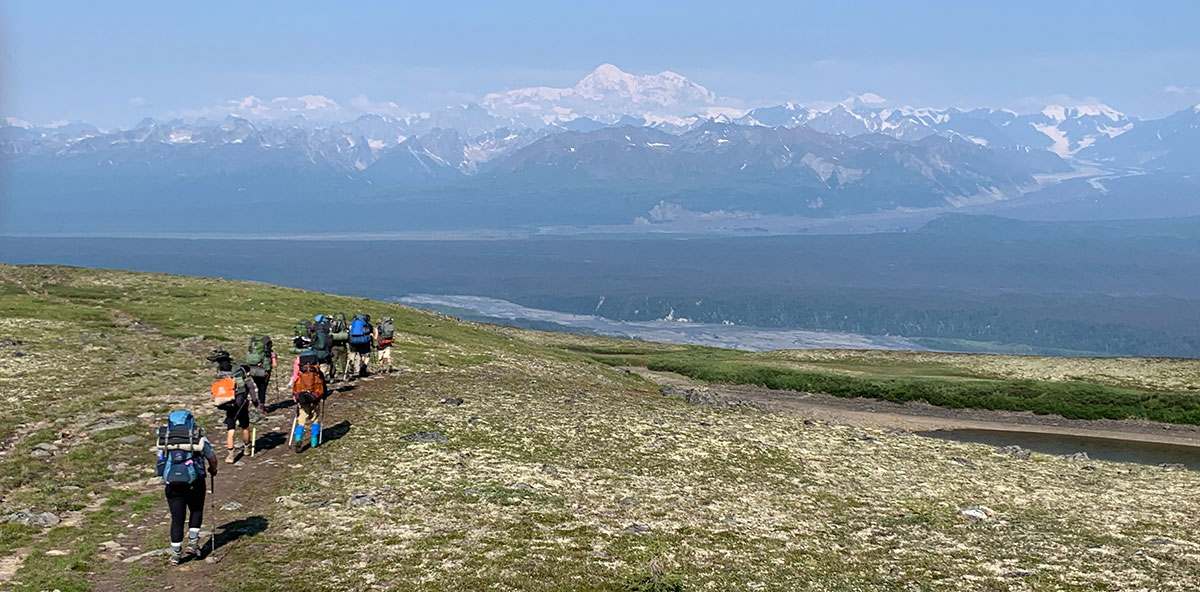
On our Alaska Expedition, students get to hike along Kesugi Ridge in Denali State Park, which on a clear day affords long-range views of the namesake mountain. In the last 500 years, Denali’s lands have been inhabited primarily by the Koyukon, Tanana, and Dena’ina peoples.
As you may know, November is Native American Heritage Month, dedicated to honoring indigenous peoples and their culture, and learning about and understanding the true history of Natives in America.
The heritage of Native Americans, Alaska Natives, and First Nations of British Columbia (National Indigenous History Month is celebrated in June in Canada) is a rich and important part of the national parks and forests, state parks and forests, and all the land we have the privilege and opportunity to experience every summer. We feel it’s important to recognize the vital role that Native Americans play in the United States, and to spread awareness about the culture and history of Native American people.
Here are a few ways we encourage our families to honor and support Native American Heritage Month.
Learn about the Native tribes in your area, and on your Adventure Treks trip
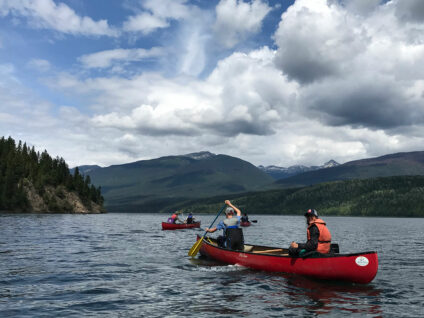
Clearwater Lake in Wells Gray Provincial Park, British Columbia, Canada. Many First Nations sites have been found within the park, most of which belong to the Shuswap (Sepwepeme) Nation. There are also historical sites credited to the Chilcotin First Nations people.
Did you know that Alaska’s state name is an Aleut Indian word? Alaxsxaq means “the mainland” or Alyeska, “the great land.” And though Alaska has the highest relative population of Native Americans, California has the highest number of Native American residents. British Columbia has the second-largest First Nations population among Canadian provinces.
Talk to your family about the people who first cared for the land where their Adventure Treks trip is going. Information on each of the tribes found in the states we run our programs can be found here: Washington, Oregon, Wyoming, Idaho, California, Colorado, British Columbia, Alaska, and North Carolina.
Explore the Native Land’s online map to see federally recognized tribes where your family lives.
In the summer, land acknowledgements are a way that we can become better allies to Indigenous Peoples. The National Museum of the Native Indian states that “many places in the Americas have been home to different Native Nations over time, and many Indigenous people no longer live on lands to which they have ancestral ties. Even so, Native Nations, communities, families, and individuals today sustain their sense of belonging to ancestral homelands and protect these connections through Indigenous languages, oral traditions, ceremonies, and other forms of cultural expression.”
The Sierra Club, one of the nation’s oldest and largest environmental organizations, recently sat down with Angela Mooney D’Arcy (Juaneno Band of Mission Indians, Acjachemen Nation) to discuss land acknowledgments and how we can go beyond acknowledgment to truly honor Indigenous environmental leadership; you can find that interview here.
Explore Native museums and cultural centers
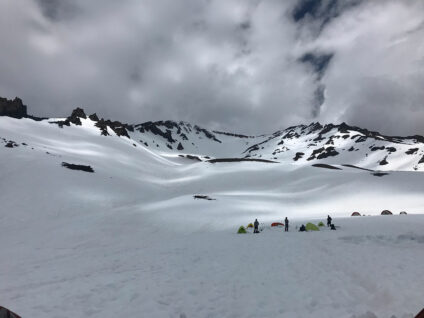
Northern California is home to a rich Native history, including the Tolowa, Shasta (Mt. Shasta pictured), Karok, Yurok Hupa Whilikut, Chilula, Chimarike and Wiyot tribes.
A great place to learn about Native cultures is through attending local tribes’ museums cultural centers, and attending community events. You can find a list of Native American museums by state here, and a list of the most recommended (anywhere from the east coast or west) here.
No matter where you live, spend some time on the National Park Service’s Native American Heritage Month website, which makes it easy to discover history, important people, stories, events, and specific places. If you want to learn even more, visit the Museum of Indian Arts + Culture online. The Smithsonian’s National Museum of the American Indian offers an online exhibition, too, including a virtual art and history collection from tribes around the globe.
Read books and share stories written by American Indians
Although it can be hard to find time to read on an Adventure Treks trip, here are a few books you can read throughout the year. It’s always a great idea to diversify the authors you read: here is a list from the School Library Journal with their books for teenagers by and about Indigenous peoples. I just finished reading Braiding Sweetgrass by Dr. Robin Wall Kimmerer. Her essays bring together Indigenous teachings and plant and animal ecology in a wonderful exploration of our relationships with other species. It helps us appreciate the beauty of nature around us, learn from it, and work to protect it so we can continue to explore and recreate for years to come.
Support Native-owned businesses and charities
In addition to learning about the history of the lands we live and play on, it’s important to get involved with organizations that support and uplift Native Americans. One way to do this is to invest in Native communities and programs that help Native food sovereignty, language preservation, youth programs, and community-building. First Nations Development Institute’s grantee directory is a great place to find hundreds of grassroots Native-led initiatives across the U.S. that First Nations has invested in. You can also support First Nations directly and to assist their Native Youth & Culture Fund, COVID-19 Emergency Response efforts, and more. With the holidays quickly approaching, you can give thoughtful presents while also supporting indigenous businesses and preserving culture—from basketballs to coffee, gourmet chocolate, and jeans. USA Today also has a list of businesses to shop.
Watch movies, shows and documentaries produced by or starring Native Americans
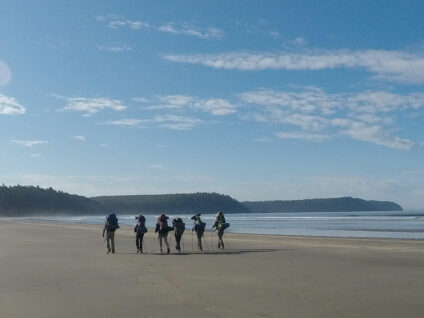
Olympic National Park is home to eight tribes: Hoh, Jamestown S’Klallam, Elwha Klallam, Makah, Port Gamble S’Klallam, Quileute, Quinault, and Skokomish.
More often than not, the stories of Native and Indigenous people have been told by Hollywood through the lens of everyone but Indigenous people. This can create a misunderstanding and misrepresentation of culture, history, and experiences. It is an important time to learn from and support Indigenous storytellers, directors, and producers to break stereotypes and common misconceptions, and to gain a better understanding of the reality of the past and present of American Indians. Smoke Signals, Crooked Arrows, Edge of America, and Warrior Women are a few movies to look into. Shift is a documentary our fall 2020 Leadership Adventure Semester students watched before building mountain biking trails, as this film is about indigenous youth from Carcross, Yukon, who have spent the past 10 years converting traditional trails around their town in to a world-class mountain biking destination. PBS currently has a collection of films available to celebrate the history, culture, and traditions of American Indians and Alaska Natives.
Another great way to stay informed about Native American Communities is to follow Native American news outlets. Typically you won’t hear common issues, current events, or contributions from Native American communities, so Beyond Bylines provides a list of news sources you can follow to stay up to date.
We hope this information is helpful. We encourage you to look into these resources as a family, learn about the area you live, where your child’s Adventure Treks trip is located, and have meaningful discussions. Our focus on respect, cultures of kindness, and building a positive and curious community goes beyond an Adventure Treks trip—to learning more about the world around us and being stewards in protecting the land we have so many meaningful experiences on.
